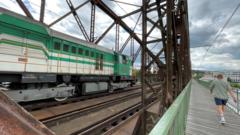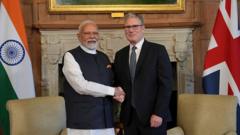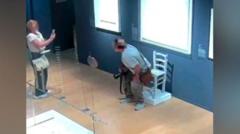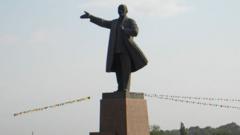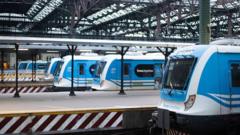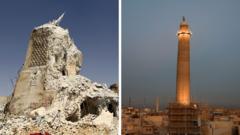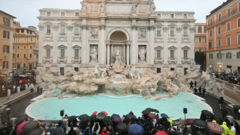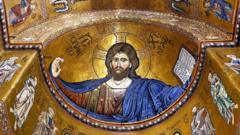The iconic Vysehrad railway bridge, a 123-year-old marvel of engineering in Prague, is at the center of a fierce controversy as the Czech Railway Authority prepares to replace it with a new structure. Situated in an architectural haven that draws eight million tourists annually, the bridge is cherished for its aesthetic contribution to the city's skyline, an opinion echoed by architect and bridge engineer Petr Tej. He argues that the bridge’s intricate architecture, coupled with the Vysehrad fortress, creates a visual panorama that is as significant to Prague as the renowned Charles Bridge and Prague Castle.
During a recent visit to the bridge, Tej expressed his dismay at plans for demolition. He, along with members of the Vysehrad Bridge Foundation, believes that the structure can be repaired rather than replaced—citing previous expert reports predicting that only 15% of the steel needs to be revitalized, compared to estimates from the Railway Authority that suggest a far larger percentage requires replacement. Supported by over 25,000 signatures on a petition advocating for restoration, the foundation has garnered backing from UNESCO, which has recognized much of Prague's historic center.
Conversely, Pavel Paidar, the Director of the Railway Authority's Construction Preparation Department, insists that safety and operational capacity must take precedence. He noted that the current bridge, already handling three-quarters of the city's railway traffic, has significant corrosion issues that limit its capacity. According to Paidar, modernization is essential to accommodate future growth in rail transport, emphasizing a need for a bridge that can reliably manage projected demands.
The proposed new bridge includes an additional track and aims to enhance existing transit links from Prague's main railway station, marrying modern infrastructure with elements inspired by the original bridge's design. However, critics remain skeptical about the practicality of relocating the historical structure, suggesting that placing it in the quieter Modrany district—a stark contrast to its urban setting—may diminish its historical significance.
Philanthropist Tomas Bistricky, co-founder of the Vysehrad Bridge Foundation, argues that the notion of conflicting interests between transport infrastructure and heritage conservation is misguided. He asserts that modernization and preservation can be harmoniously achieved without sacrificing one for the other.
As stakeholders wrestle with the dilemma of modernization versus historical preservation, the Czech government may soon be called upon to resolve this contentious issue, as the momentum builds for both advocating for the old and welcoming the new. This ongoing discourse underscores a universal struggle faced by cities worldwide as they navigate the delicate balance between progress and tradition.
During a recent visit to the bridge, Tej expressed his dismay at plans for demolition. He, along with members of the Vysehrad Bridge Foundation, believes that the structure can be repaired rather than replaced—citing previous expert reports predicting that only 15% of the steel needs to be revitalized, compared to estimates from the Railway Authority that suggest a far larger percentage requires replacement. Supported by over 25,000 signatures on a petition advocating for restoration, the foundation has garnered backing from UNESCO, which has recognized much of Prague's historic center.
Conversely, Pavel Paidar, the Director of the Railway Authority's Construction Preparation Department, insists that safety and operational capacity must take precedence. He noted that the current bridge, already handling three-quarters of the city's railway traffic, has significant corrosion issues that limit its capacity. According to Paidar, modernization is essential to accommodate future growth in rail transport, emphasizing a need for a bridge that can reliably manage projected demands.
The proposed new bridge includes an additional track and aims to enhance existing transit links from Prague's main railway station, marrying modern infrastructure with elements inspired by the original bridge's design. However, critics remain skeptical about the practicality of relocating the historical structure, suggesting that placing it in the quieter Modrany district—a stark contrast to its urban setting—may diminish its historical significance.
Philanthropist Tomas Bistricky, co-founder of the Vysehrad Bridge Foundation, argues that the notion of conflicting interests between transport infrastructure and heritage conservation is misguided. He asserts that modernization and preservation can be harmoniously achieved without sacrificing one for the other.
As stakeholders wrestle with the dilemma of modernization versus historical preservation, the Czech government may soon be called upon to resolve this contentious issue, as the momentum builds for both advocating for the old and welcoming the new. This ongoing discourse underscores a universal struggle faced by cities worldwide as they navigate the delicate balance between progress and tradition.

